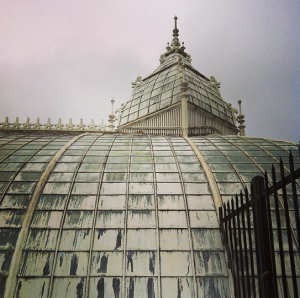Kind Noticing: A Personal How-To
 The fraud police were on high alert this morning when I walked into the yoga studio. This particular patrol are “an imaginary, terrifying force of experts and real grown-ups who don’t exist and who come knocking on your door saying ‘fraud police. we’ve been watching you and we have evidence that you have no idea what you are doing.'” Less eloquently, they’re the voices in your head that tell you you’re not worthy of whatever it is you’re doing in your life.
The fraud police were on high alert this morning when I walked into the yoga studio. This particular patrol are “an imaginary, terrifying force of experts and real grown-ups who don’t exist and who come knocking on your door saying ‘fraud police. we’ve been watching you and we have evidence that you have no idea what you are doing.'” Less eloquently, they’re the voices in your head that tell you you’re not worthy of whatever it is you’re doing in your life.
Until a few months ago, the fraud police confronted me at least four times a day. At work. At soccer. In my kitchen. In my poetry. Now we’re only passing acquaintances, particularly when I do things that make me anxious. Like yoga.
Except I’ve been irrevocably curious about the author of one of my most highly recommended books, Full, by Kimber Simpkins. As she’s a local yoga teacher, it seemed silly not to at least go see an inspiration in person, if only because I believe that breaking the mystique of someone is the best way to allow yourself to become fully inspired by them.
With fraud police screaming at me, Kimber accompanied the class in a round of Amazing Grace on what can best be described as a Hindi elephant’s keytar.* Notes still reverberating along the walls of the studio, Kimber’s liltingly joyful voice began to speak.
“I’ve been doing revisions on my book for my publisher,” she began. “And one of the things they pointed out was that I never defined mindfulness.” The entire class spun from this statement, each pose and idea woven back to it like a well thought out sermon despite Kimber sounding off the cuff.
“One of my favorite teachers defines mindfulness as kind noticing. No judgement, no reaction. It’s being able to recognize what is happening while making space for feelings, but without necessarily doing anything. Just letting it all in.”
Months ago,when this guy introduced me to the term mindfulness, I understood what it meant in theory. I even understood feeling in the moment and being aware of my body. But I didn’t understand the how. How is one actually mindful? What would it look like to make space? How can you have no reaction?
Those lingering fraud police this morning reminded me of what my process became, as I put Kimber’s ideas into practice – my own practice, the one I’ve created for myself over the past six months. I’ll use those fraudulent patrol officers as my example here, but this literally is how I attempt to make space for and and offer compassion to myself in any situation: soccer, wildly melancholy feelings, French horn playing.
First, I have to be aware that something is stirring inside of me. Sometimes I catch the fraud police as they arrive (which I did this morning. The showed up when I put on my yoga pants, describing just how much I’d fail at fitting in at yoga) and sometimes, it’s only after my mind has started spinning and spiraling that I can think “Ah-ha! You sirs, are the fraud police!”
Next, I try to feel my heartbeat. A fast beat means the police have a tight grip on me. A steadier one means I have more control. Checking in with myself to understand where I’m at feels important for this process. Today, the police had a medium grip – they were clutching but not squeezing.
Then, I acknowledge what is “making” me feel this way. Clearly, I am making me feel this way, however there are external forces at work too.These forces are often manifestations of the police. They’re thoughts in my head saying “Sucker!” and “Fool!” and “Go home!” I shut my eyes and give them a tangible surface – a sort of iridescent animal cracker, with the shimmer of oil spilled across a lake. I smile at those thoughts flooding into me. There they are. Yep, they exist.
This next part gets weirder. In order to make space for these creatures (aka thoughts), I imagine a blue circle expanding from the corner of my heart, somehow taking up space in both my mind and my body and my ticker. It’s part of me yet it’s also part of everything.
I then politely but firmly ask the thoughts to leave. I imagine those animal crackers, turning tail and moving along into the blue abyss, never touching the ground as they march away. And they become one with that blue atmosphere of sorts. Part of me, yet dissolved.
I spent the better part of Kimber’s class politely reminding myself “No judgment, no reaction.” The fraud police were bent on sticking with me, even as I whispped them into me. “Just one more thing,” they’d say, popping up again. And sometimes that’s how it goes.
Not reacting to the fraud police (by yelling, by being frustrated, by letting them control me) takes away their power. They can exist – but they don’t have to influence me. It’s not wrong to feel those feelings. It’s not productive either, but it’s not wrong. Thinking about it as “wrong” or “unproductive” seems to apply judgment to the situation. There’s nothing to judge. As my friend Sean used to tell me, it is what it is. And in that “is-ness” is perfection.
–
*Read more about the actual class here.

 Follow
Follow